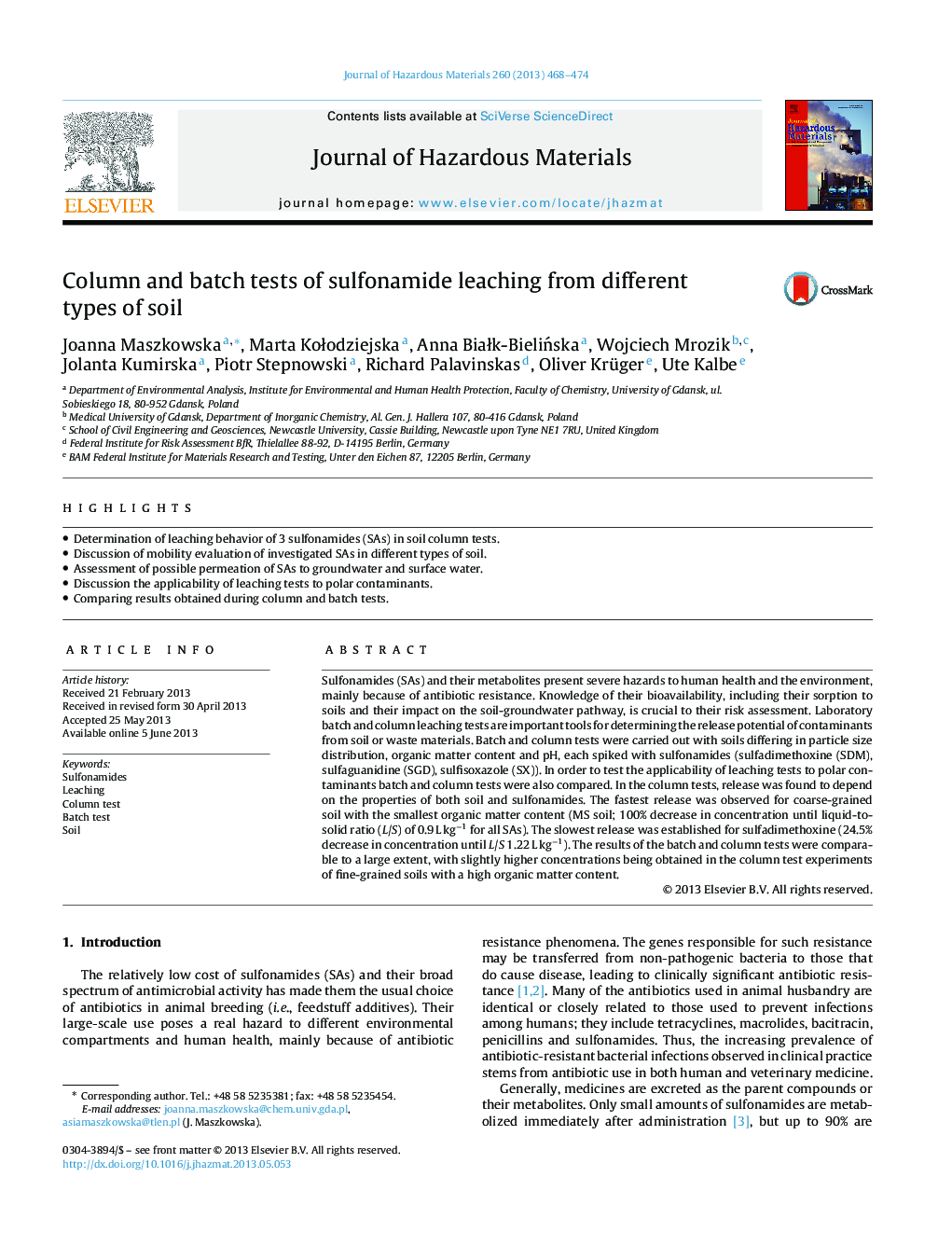| Article ID | Journal | Published Year | Pages | File Type |
|---|---|---|---|---|
| 6972407 | Journal of Hazardous Materials | 2013 | 7 Pages |
Abstract
Sulfonamides (SAs) and their metabolites present severe hazards to human health and the environment, mainly because of antibiotic resistance. Knowledge of their bioavailability, including their sorption to soils and their impact on the soil-groundwater pathway, is crucial to their risk assessment. Laboratory batch and column leaching tests are important tools for determining the release potential of contaminants from soil or waste materials. Batch and column tests were carried out with soils differing in particle size distribution, organic matter content and pH, each spiked with sulfonamides (sulfadimethoxine (SDM), sulfaguanidine (SGD), sulfisoxazole (SX)). In order to test the applicability of leaching tests to polar contaminants batch and column tests were also compared. In the column tests, release was found to depend on the properties of both soil and sulfonamides. The fastest release was observed for coarse-grained soil with the smallest organic matter content (MS soil; 100% decrease in concentration until liquid-to-solid ratio (L/S) of 0.9Â LÂ kgâ1 for all SAs). The slowest release was established for sulfadimethoxine (24.5% decrease in concentration until L/S 1.22Â LÂ kgâ1). The results of the batch and column tests were comparable to a large extent, with slightly higher concentrations being obtained in the column test experiments of fine-grained soils with a high organic matter content.
Related Topics
Physical Sciences and Engineering
Chemical Engineering
Chemical Health and Safety
Authors
Joanna Maszkowska, Marta KoÅodziejska, Anna BiaÅk-BieliÅska, Wojciech Mrozik, Jolanta Kumirska, Piotr Stepnowski, Richard Palavinskas, Oliver Krüger, Ute Kalbe,
